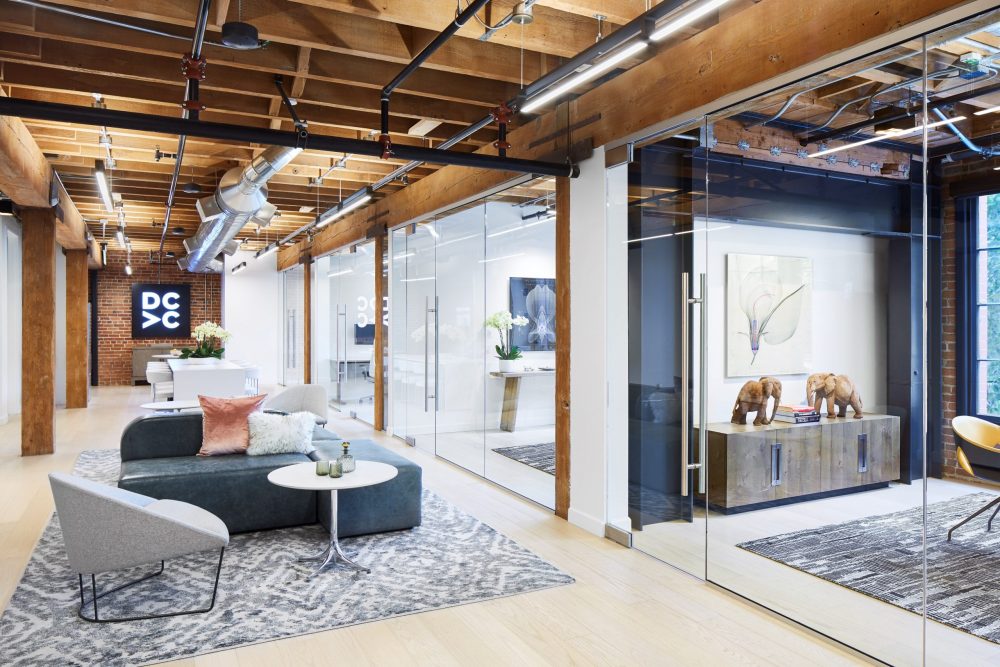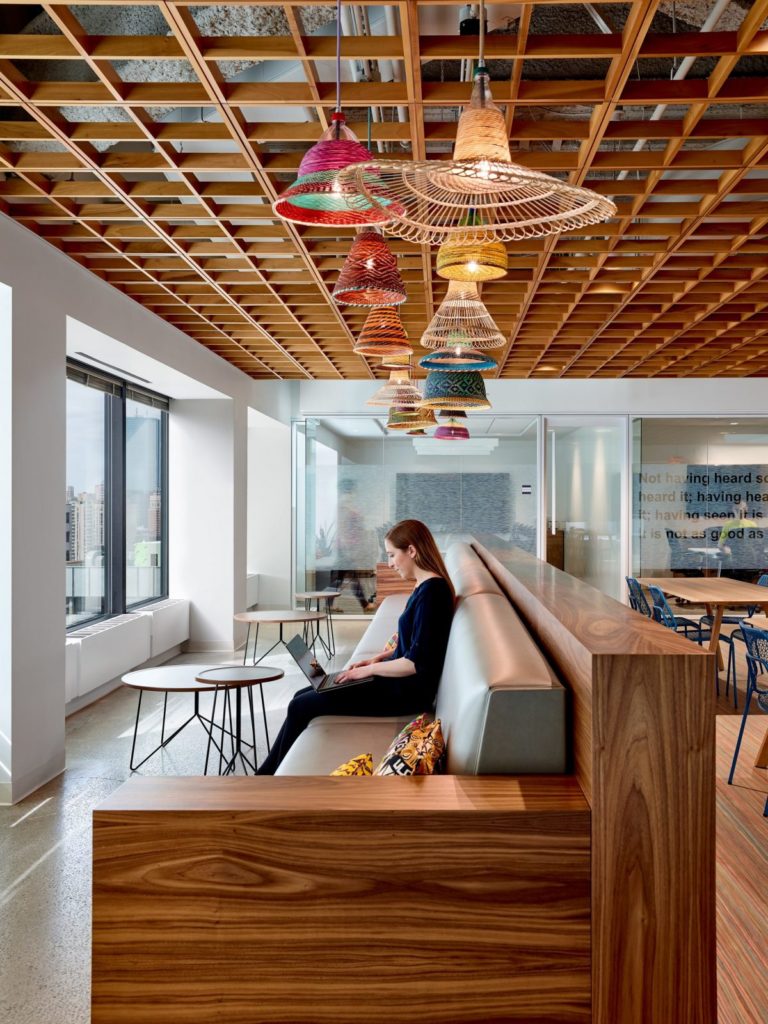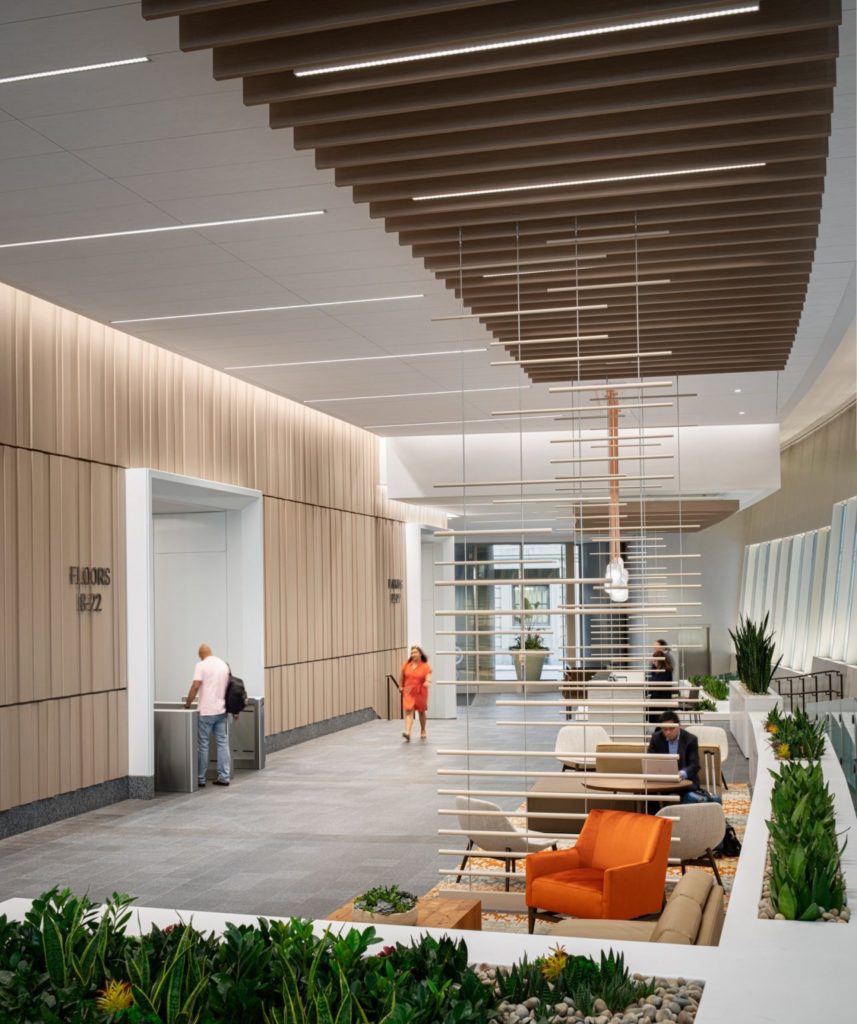
20 Apr Wellness by Design: It’s Time for Healthier Materials In The Workplace
As consumers, we want to know where our food comes from, where our clothes are made, and what exactly is in our shampoo. It’s about knowing what chemicals we use or are exposed to in our daily lives. While it’s easier to manage what’s introduced in the home, the workplace is another story. And let’s face it: we spend most of our waking hours in the workplace. The occupants of an office give up that control to the designer. So as designers of workspaces, we have a responsibility to fill them with products made of healthier materials. By educating ourselves on healthier material, we have an opportunity to make a greater impact on our client’s lives and more meaning in our design. Designers have a lot of things to consider already: aesthetics, light, cost, availability, durability, and maintenance. The human health impacts of our choices should be among these top considerations. Most people assume if it’s on the market, it’s safe and tested. This is simply not true, since chemicals in building materials are mostly unregulated and untested by the government, and it is left up to manufacturers to disclose potential harm.
Today there are 86,000 chemicals in use with only 200 tested by the EPA—and just a handful of those are regulated. Traces of 167 industrial chemicals and pollutants can be found in one adult in the U.S. Of those, 76 are linked to cancer, 86 are known endocrine disruptors (which interfere with your hormones), and 79 may cause birth defects and developmental delays. A person’s workplace can be contributing to these chemical exposures. Building products have some of the worst known chemicals, such as persistent, bioaccumulative, and toxic substances (PBTs), which are unnatural and will never break down on earth or in our bodies. Additionally, their quantity increases as they move up the food chain. In thousands of years some of our choices – like flame retardants, antimicrobials, and stain resistance treatments — will still be lingering around on earth and its inhabitants. Think, if it pollutes the planet it will pollute the people.
Other products that have chemicals of concern are plastics, which contain phthalates (the ingredients that make plastic and vinyl flexible and soft). As building products degrade over time and surface treatments wear off, the chemicals that make up the ingredients become dust. The dust then enters the body through our skin, our mouths, or the air we breathe. Phthalates have been linked to asthma and are known to reduce fertility in men. Ask your vinyl flooring manufacturer about their phthalate-free options. Maybe you feel overwhelmed by all the data and tools available or feel helpless against manufacturing. Designers are not chemists nor are we expected to be, but it is our responsibility to be educated and informed. So, what can we do?

Select natural materials
Using natural materials is one way to avoid extra chemicals that a synthetic material might have. In a workplace, natural materials can be easy to care for, naturally fire retardant, and provide occupants with a connection to nature. If the budget allows for leather upholstered furniture, not only will it last longer but it will become more beautiful with age. Wood, that is free of added stains and formaldehyde, is a smart way to include natural elements, and also becomes more beautiful with age as it gets darker or lighter adding a warm experience to your space. High traffic areas, such as lobbies, present a great opportunity to use natural, healthier materials like stone floors which require very little maintenance and last forever. If you cannot use natural materials everywhere, choose spaces where you can have the greatest impact for the occupants.
Less is More
This design strategy helps the triple bottom line of sustainability, cost, and people’s health in a variety of ways. Fewer materials and finishes mean fewer hazardous chemicals to worry about: fewer adhesives, sealers, and different types of cleaning products to buy. The use of concrete floors eliminates the need to apply or replace flooring products and adhesives in the space. Concrete floors are also durable and require little effort to maintain. Many office buildings provide great opportunities for leaving the ceiling exposed while eliminating additional products and the infrastructure needed above as well and add a unique industrial character to the workplace. Perhaps the space has existing building walls with charm that can be left unfinished as a feature of the space such as brick or metal.
Transparency is Key in the Process of Sourcing Materials
Do you know what is in your materials? Ask the question: what am I making this office out of? What are the ingredients? You don’t need to be an expert of manufacturing to be an advocate for human health. The best question to ask a manufacturer is if they have a Health Product Declaration (HPD)– think of it as a nutrition label for products. This is a relatively new idea to the market, but it is the future of consumerism. Have conversations with your manufacturer’s sales representative and your clients with critical questions such as: where did it come from, where will it end up, and what are the implications. Then be sure to educate your clients at the design stages of your project will set up future health wins for the employees when it comes time for replacements. Although most healthier material options like paint and carpet have a little upcharge, educate your client on the investment in health they are making. Consider the social justice of the people living next to the factory or incinerator as well as the occupants. Their health may be affected by your decisions as well. Be curious because at some point everything you specify in the building will make its way into the bodies of its inhabitants. We must shift the market demand to disclose on everything – it is our responsibility to the client, the occupants, and the community. Once all the information is available, then we can start to see real changes for a safer and greener planet.

